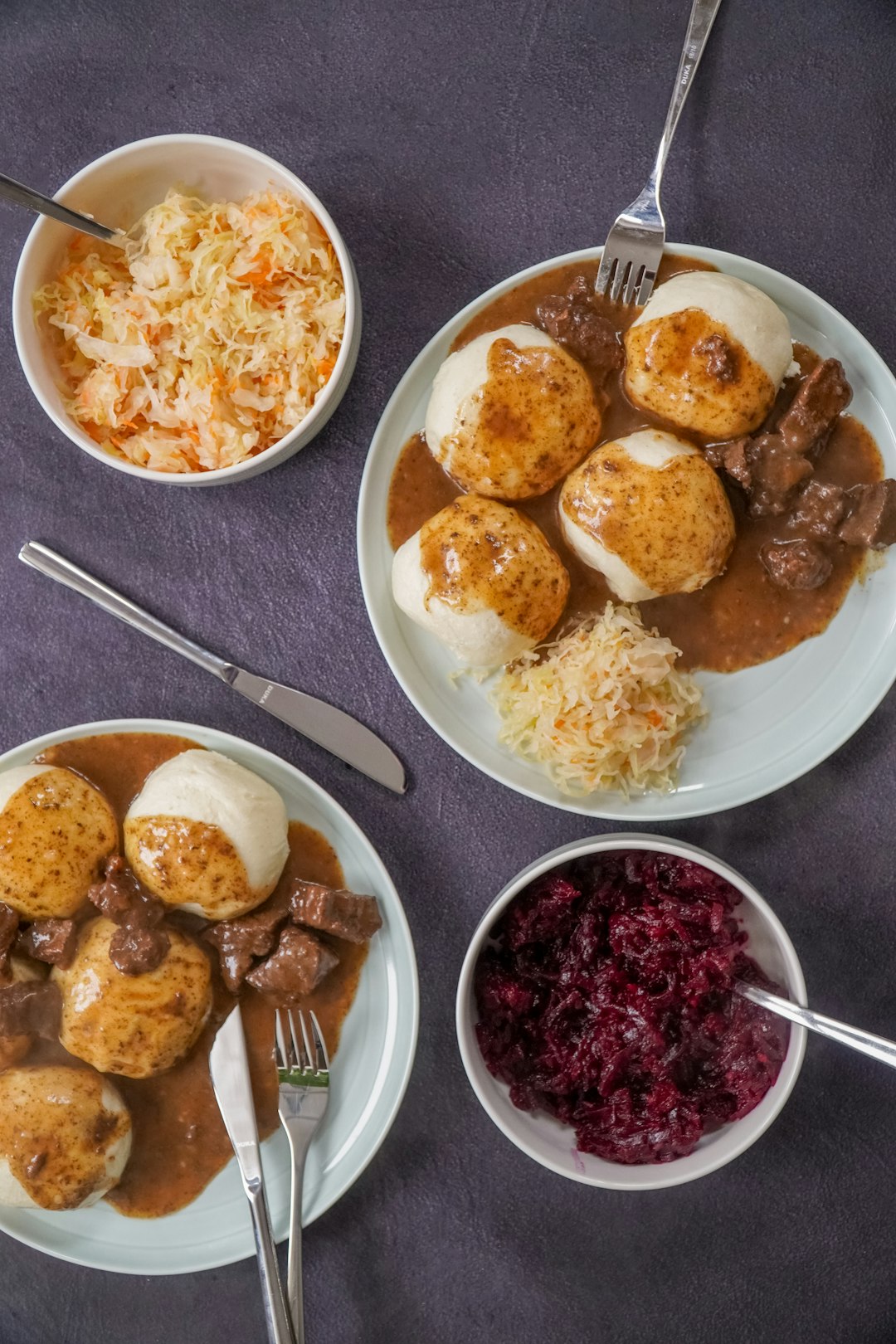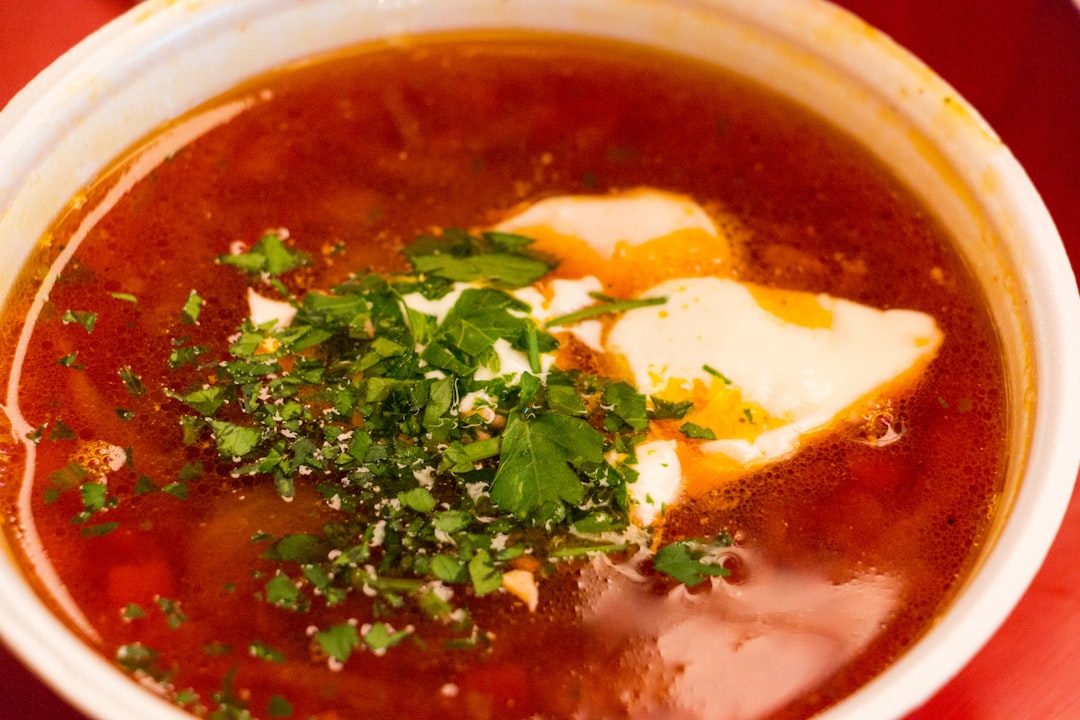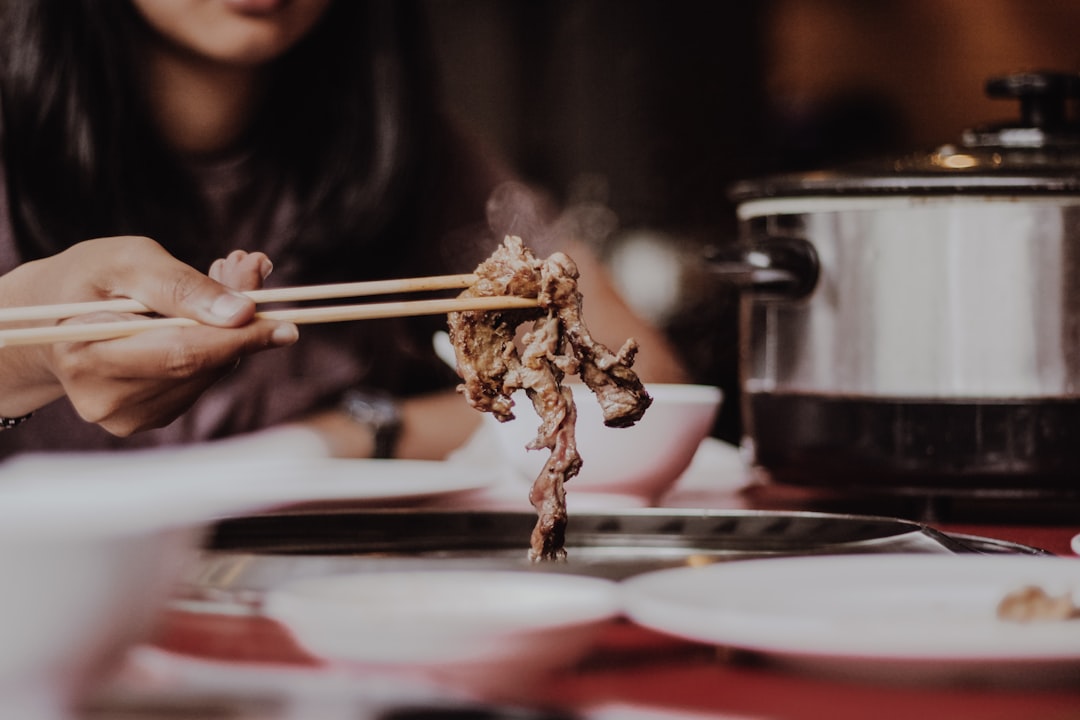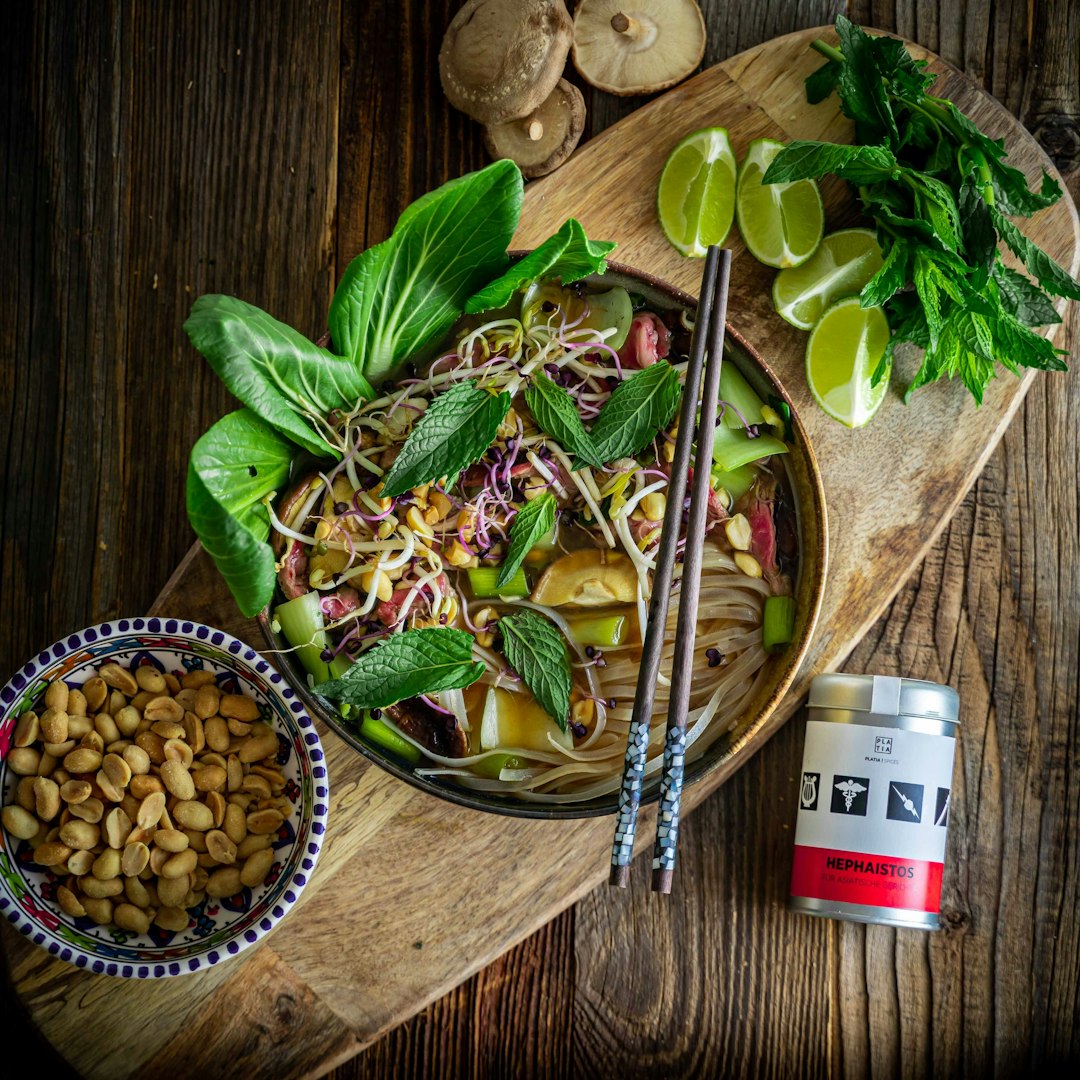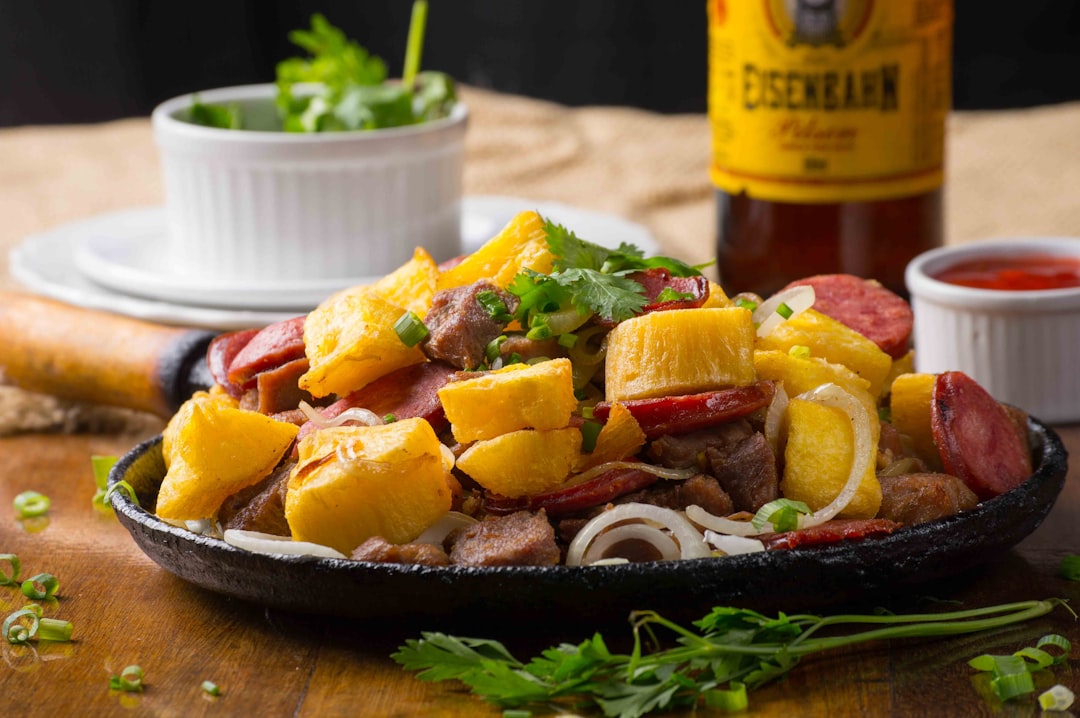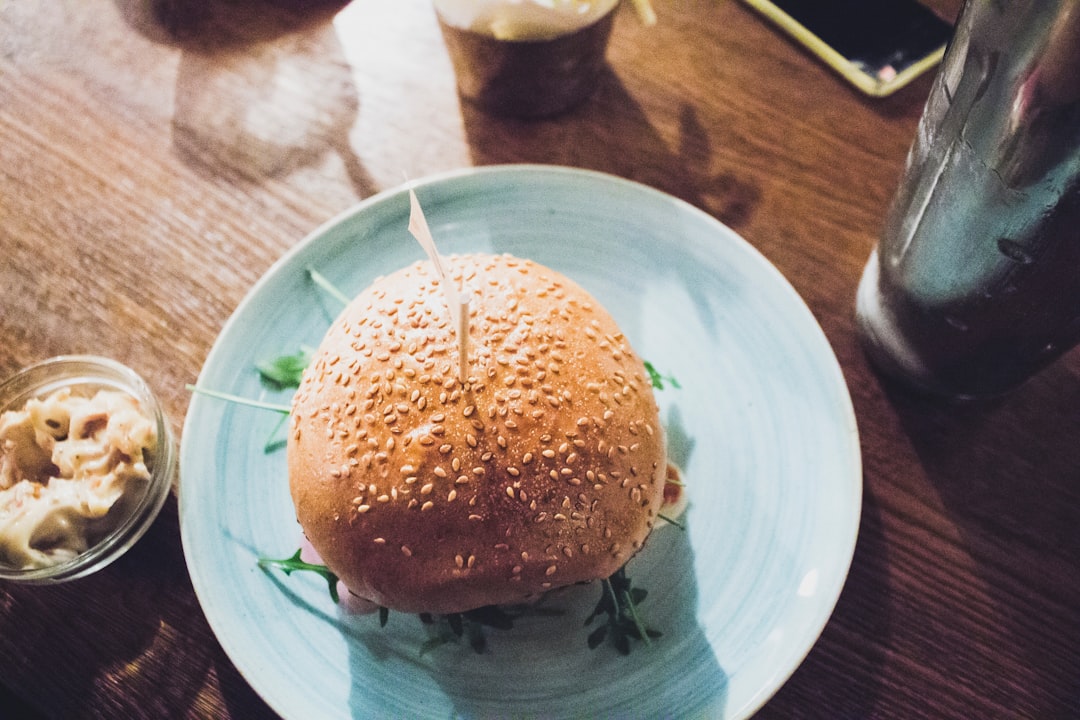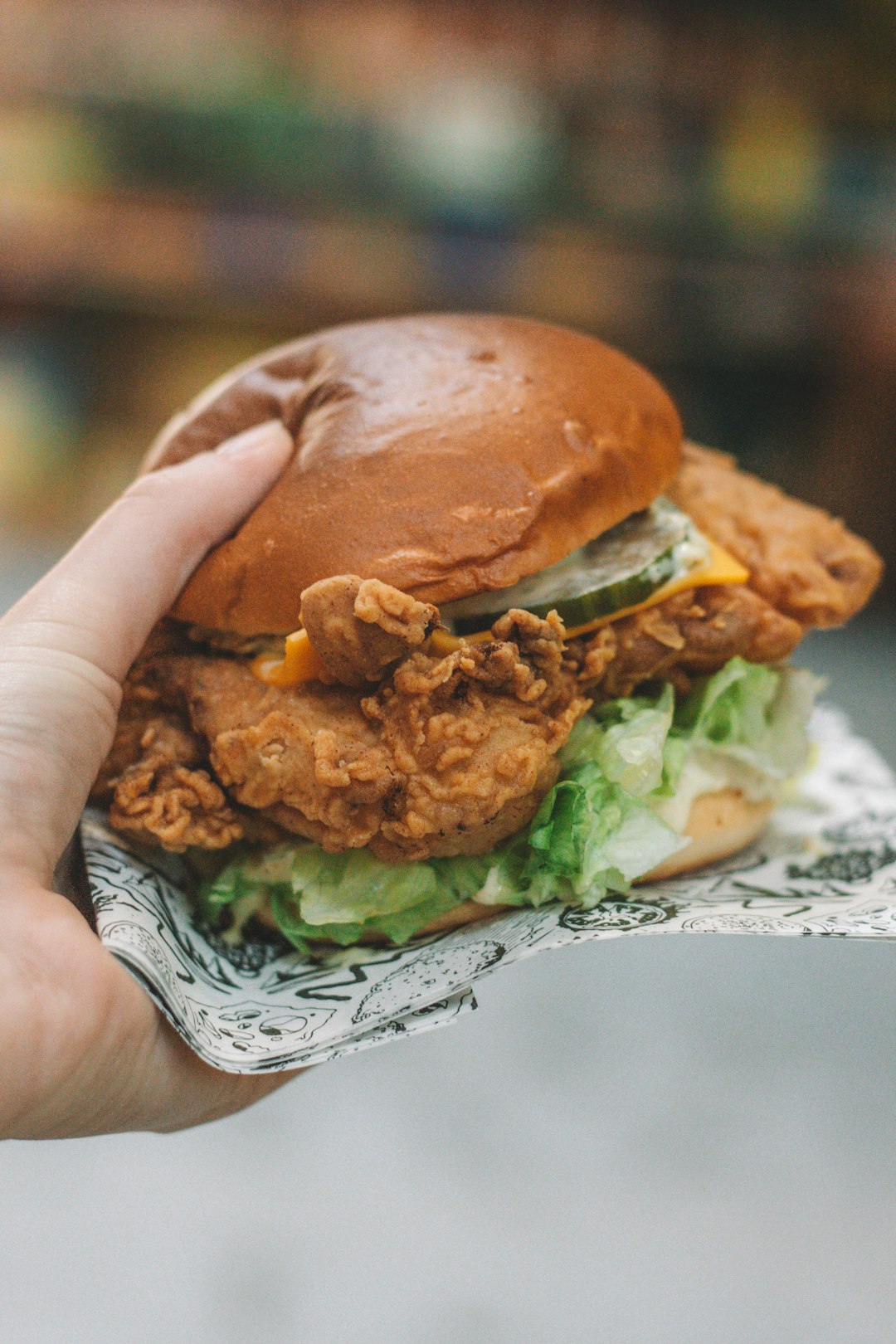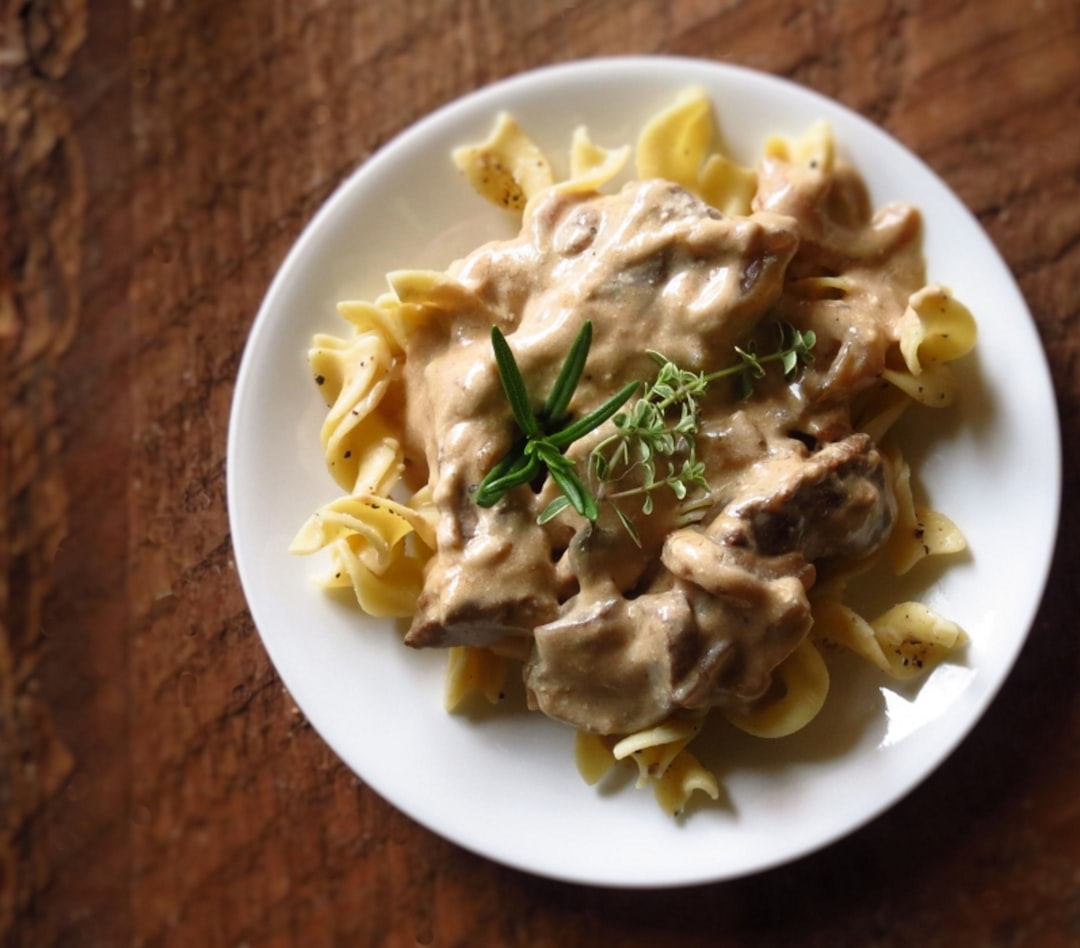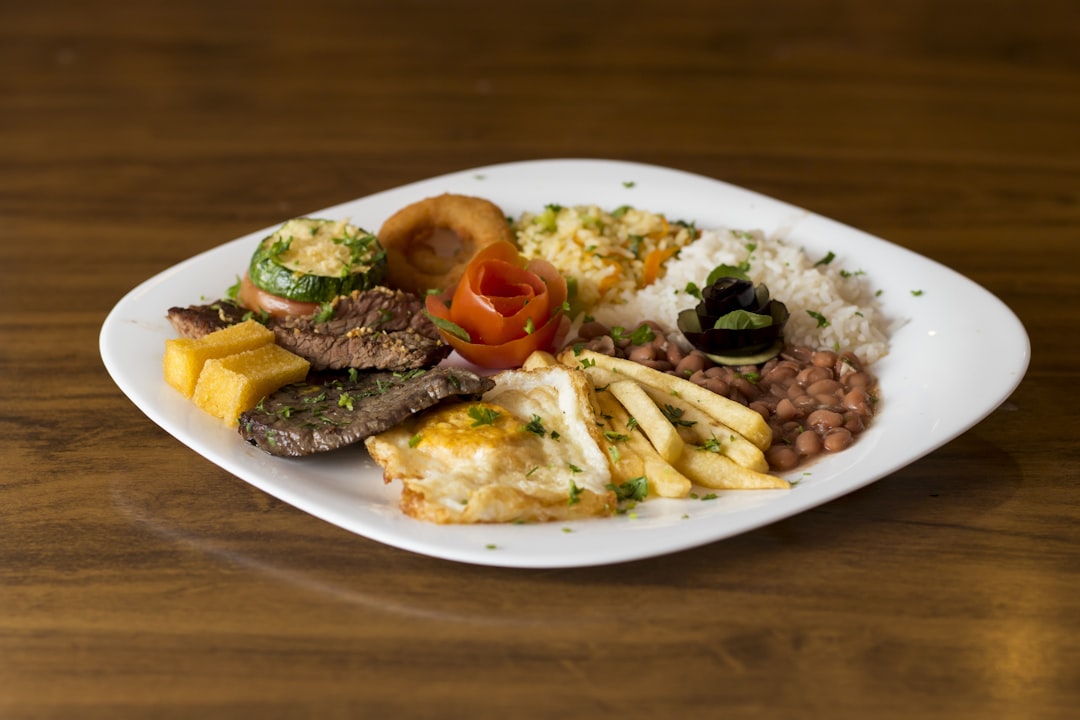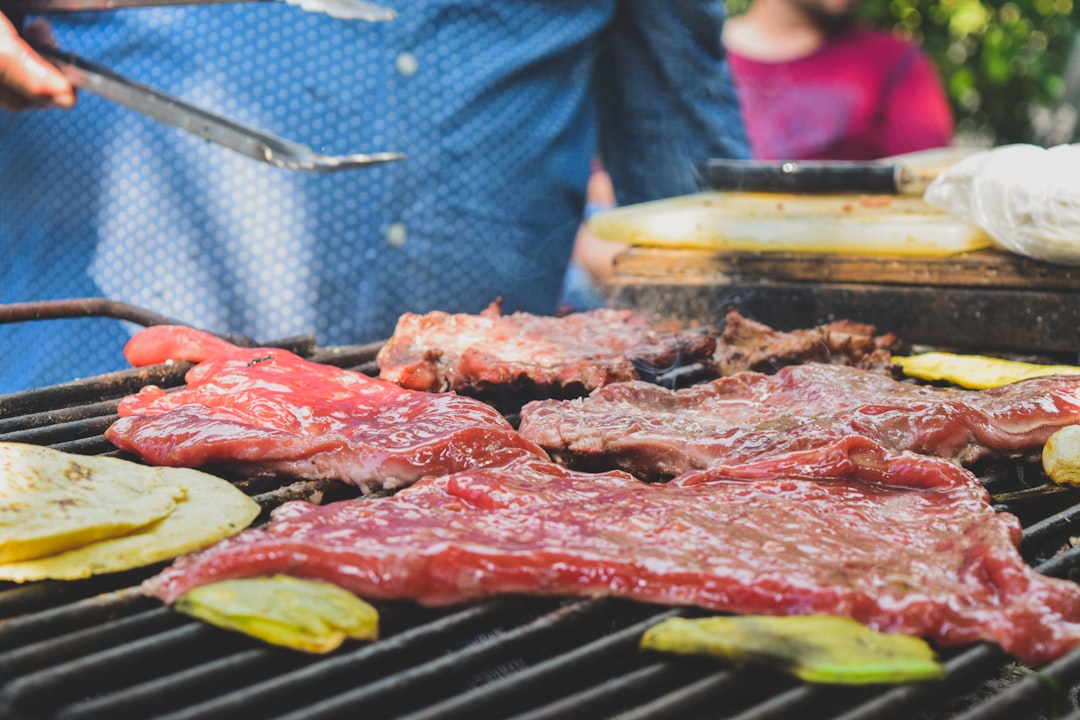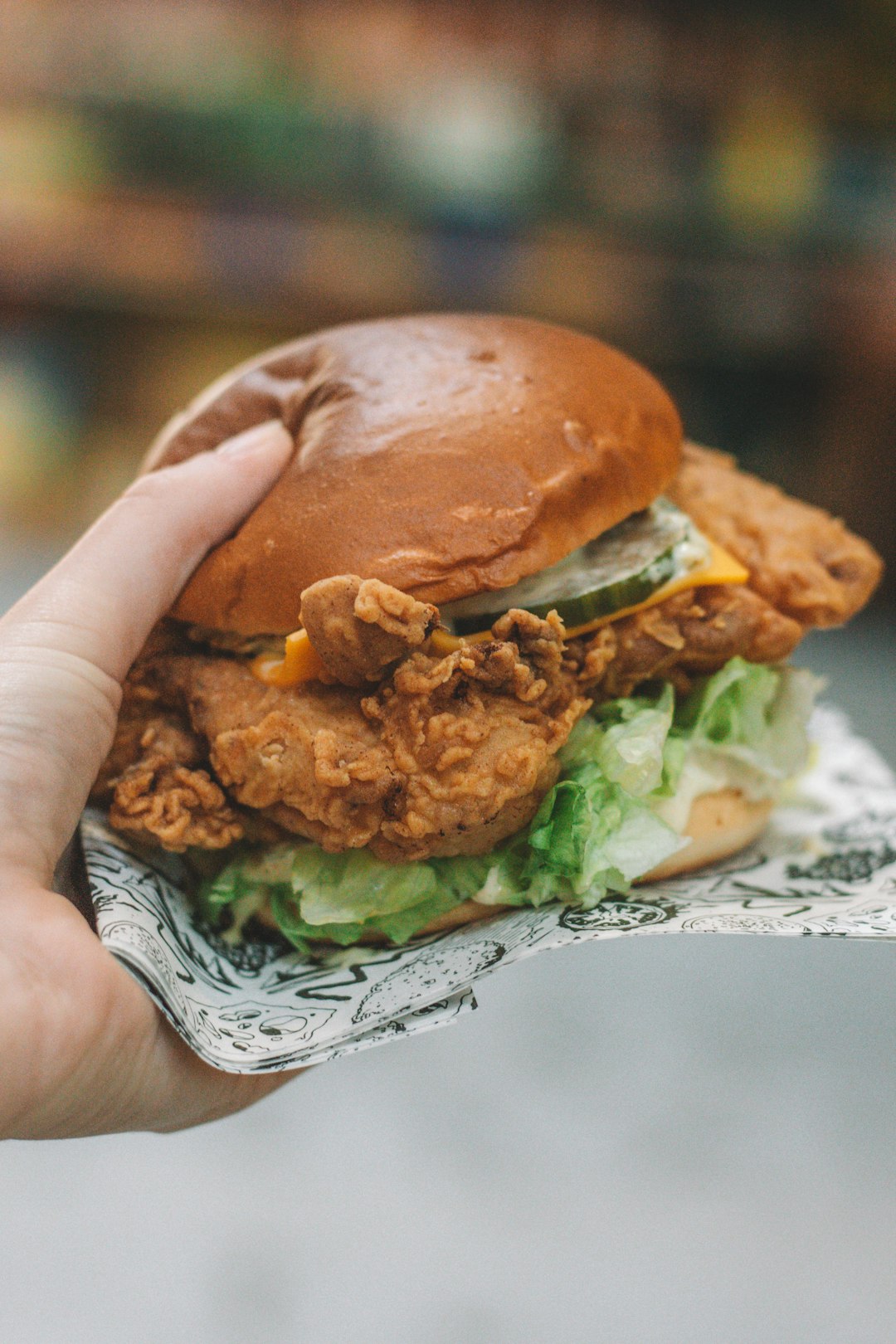Beef
From a culinary perspective, beef is one of the most versatile proteins available. Whether braised in a slow cooker or sizzled on a hot griddle, beef can make for delectably succulent dishes. Its flavors range from mellow to robust, depending on the cut and grade, the latter of which is determined by the amount of marbling (the intramuscular fat content), followed by its age and gender.
Perhaps what makes beef so remarkable is its history. Human consumption of this bovine meat dates back to prehistory and has since been adopted into various traditions, recipes, and cultures across the world. As one of the oldest domesticated animals, cows have long been associated with fertility and abundance, often referenced in ancient texts, myths, and religious scriptures.
The nutritional benefits and cultural significance of beef makes it a beloved staple in global cuisine. Rich in protein, iron, zinc, and niacin, beef is not only a good source of essential vitamins, but it also contains B-complex vitamins, magnesium, and phosphorus.
The many variations, dimensions, and nuances of beef create a deeply personal experience for each eater – a gift that should not be overlooked. From comforting casseroles to juicy steaks, beef offers a plethora of possibilities for the budding chef and passionate foodie alike. Let us revel in its manifold offerings and savor the unique pleasure that beef brings.
Beef dishes
A selection of Beef dishes.
Goulash
Goulash (also known as gulyás, gulyas or gulas) is a classic Hungarian soup that has gained tremendous renown across the world. Its unique fusion of savory broth and hearty chunks of beef, potatoes and vegetables has proved irresistible to generations of food lovers.
GoulashBorscht
Borscht—a traditional dish of Eastern European ancestry and a sure favorite among many. Its humble beginnings are rooted in Ukraine, where it's been enjoyed for centuries as a nourishing, comforting bowl of nature's best ingredients. But what is borscht?
BorschtBun bo Hue
As a connoisseur of Vietnamese cuisine, I cannot overstate the scrumptiousness of Bun bo Hue. This mighty dish originated in the ancient city of Hue, located in central Vietnam, and consists of a savory broth that is spiced to perfection with a balance of lemongrass and chili paste. The base of the soup is rice vermicelli, topped with a generous helping of thinly sliced beef shank and pork knuckle. If you’re lucky enough to find it, there may even be an additional topping of beef blood cubes, or sanguine slices as some call it.
Bun bo HueMachaca
Ah, the delectable machaca – a Mexican dish that is both savory and scrumptious. It consists of smoked, shredded beef (or, in some cases, pork) that is simmered in a variety of herbs and spices. Machaca is a versatile dish – it can be enjoyed as breakfast tacos, burritos, or as a stand-alone entrée.
MachacaYakiniku
Mouths began to water as the succulent smell of Japanese-style barbecue drifted through the restaurant, Yakiniku slowly joining the conversation of gustatory delight. This classic dish – literally meaning “grilled meat” – is a timeless favorite of Japan, offering a satisfyingly savory meal.
YakinikuRundstück warm
Ah, the Rundstück warm! It is a delectable German dish that has been tantalizing palettes since the Middle Ages. A traditional fare of the Bavarian region, this savory entrée is composed of a variety of ingredients that combine to form a truly exquisite experience.
Rundstück warmCheeseburger
Ah, the cheeseburger—the delectable dinner plate staple that has graced countless tables and kitchen counters for decades. Packed with succulent goodness and an enticing aroma, this beloved treat can be as simple or as complex as you want it to be. But it's always sure to delight.
CheeseburgerCheesesteak
The cheesesteak: a dish of divine proportions. A rich and robust combination of steak, cheese, and bread that has been tantalizing taste buds around the world for decades. But what makes this iconic sandwich so facinating? Let's explore the culinary nuances of this remarkable dish.
CheesesteakAlambre
Alambre is a Mexican dish that can be found in most Mexican restaurants. It is traditionally made with steak, bacon, and other ingredients such as bell peppers, onions, and mushrooms. The beef is cooked on a hot griddle and then mixed with the other ingredients. It is then served with a side of rice and beans or other accompaniments.
AlambreBandeja paisa
As a Colombian national dish, Bandeja Paisa has earned itself a well-deserved reputation for its flavorful and hearty ingredients. Rich in protein and smothered in a unique mix of sauces, Bandeja Paisa is not only a culinary marvel but also a symbol of the Colombia's culture and history.
Bandeja paisaBeef chow fun
Beef Chow Fun is an iconic Cantonese dish, renowned for its tantalizing platter of marinated beef, aromatically-charged noodles, and delectably crisp vegetables. It's a medley of textures and flavors that come together in a flavorful, saucy symphony.
Beef chow funBeef Hatkora
The tantalizingly tangy and toothsome tingle that is Beef Hatkora has been an all-time favorite of mine since my childhood. Growing up in Bangladesh, there was little that brought as much delight to the dinner table as this zesty and flavorful dish. The traditional recipe calls for a combination of beef, potatoes, onions, garlic, and areca nuts along with a secret blend of seasonings and spices.
Beef HatkoraBeef on weck
Beef on weck is a slab of succulent, slow-roasted beef, piled high atop a toasted bun and dressed in a hearty slather of au jus and horseradish. A Buffalo, New York original, the beloved handheld meal has been delighting tastebuds since the late 1800s.
Beef on weckBeef Stroganoff
Beef Stroganoff is a classic dish that has been around for centuries, imbued with flavors and textures that make it a delight to savor. Although its origins are difficult to pinpoint, modern iterations of the dish can trace their lineage to Imperial Russia where Tsar Alexander III’s famed chef, Charles Briere, is thought to have created the delight.
Beef StroganoffBeef Wellington
Beef Wellington is a timeless classic that is sure to garner appreciation and accolades from all who partake. It's tender, succulent chunks of beef encased in a golden and flaky puff pastry, providing a delicious and sumptuous flavor. The combination of the grass-fed beef, béchamel sauce, Dijon mustard, mushrooms, and prosciutto ham creates an unrivaled gastronomic adventure.
Beef WellingtonBeefsteak
Tantalizingly tender and richly flavorful, beefsteak has been a staple in the culinary world for centuries. This classic dish has been reinvented and revamped over the years, but the basic principles remain the same: a juicy, savory cut of beef, cooked to perfection and served with a variety of accompaniments. Whether you're a novice cook or a connoisseur of steak, this dish is sure to satisfy your taste buds and tantalize your palate.
BeefsteakBife a cavalo
Bife à Cavalo is a classic Brazilian dish that has been a mainstay of the local cuisine since the early nineteenth century. Revered by those who have tasted it, the meal consists of a thick cut of beef steak topped with fried egg, served over cooked white rice and, traditionally, topped with a portion of sautéed cubed potatoes.
Bife a cavaloBistecca alla fiorentina
If there is one dish that incites a palpable feeling of wonder and allure in Italian cuisine, it is Bistecca alla Fiorentina. This iconic steak hails from Tuscany, where the hearty and robust flavours of the dish will captivate even the most discerning diners.
Bistecca alla fiorentinaBistec de Palomilla
Ah bistec de palomilla. For those who are not familiar with this drool-inducing dish, it is a classic Cuban dish that consists of tender beefsteak pounded thin, seasoned with garlic, salt, and pepper, and then flash fried in butter or oil. Topping this off is a garlicky tomato sauce and, sometimes, a dollop of crema. What can I say? Tasting it is truly an incomparable experience; one that is sure to tantalize even the most discerning of palates.
Bistec de PalomillaChateaubriand
Chateaubriand, the celebratory centerpiece of many French feasts, is an enduring classic that continues to captivate foodies around the world. It's a succulent cut of beef tenderloin that's butterflied, pan-seared until perfectly browned and tender, and cloaked in a resplendent demi-glace sauce.
ChateaubriandCowboy beans
As summer comes to a close and I start to crave all the Fall flavors that come along with, I can’t help but think of my family’s favorite dish - Cowboy Beans. This no-fuss, delicious dish is a real crowd pleaser and depending on who you’re cooking for, you can add or omit certain ingredients to make it a unique experience every time.
Cowboy beansCrispy tadyang ng baka
It's no secret that Filipino cuisine is known for its delicious and inventive dishes, and one that stands out in particular is the Crispy Tadyang ng Baka. This delightful dish combines succulent slices of beef short ribs, marinated in a special mixture of spices and then deep-fried to perfection. The result is a unique and fabulous entree that is sure to make your taste buds swoon.
Crispy tadyang ng bakaBeef
Beef – A Fanciful and Flavourful Food
When it comes to meat, few proteins possess the gustatory grandeur and downright delectability that beef can bring to the dinner table. Whether found in a juicy burger, a thick steak, or a hearty stew, beef is a culinary cornerstone of many cultures. Its rich flavour, succulent texture, and versatile nature makes it one of the most cherished meats on the planet.
One of the greatest aspects of beef is its malleability when it comes to food pairings. As beef tends to be robust and flavourful, it pairs wonderfully with a variety of ingredients. For example, herbs and spices such as oregano, garlic, rosemary, and thyme add an aromatic and pungent punch to cuts like skirt steak. Simultaneously, lighter ingredients can also help to round out the flavour profile of beef. Seared Salmon, for instance, adds a lovely juxtaposition in terms of texture and savouriness when served alongside a beef dish.
Speaking of which, some of the most famous beef dishes come from all around the world. The French classic Boeuf Bourguignon is a heavenly concoction of beef, red wine, mushrooms, and bacon. Meanwhile, the Korean staple of Bulgogi involves marinating thinly-sliced beef with a sweet soy mixture before grilling or frying it up to perfection. From the United States’ iconic hamburger, to the Argentinian delicacy of Asado, beef has truly become a ubiquitous culinary offering across the globe.
Beef is undoubtedly a fantastic food to include in a meal - both for its deliciousness and versatility. When cooked with care, it can be a stunning addition to any plate and will have you wanting more. So why not give it a go and let the beef speak for itself?
History of Beef
Beef is a beloved food enjoyed by many cultures around the world. But where did this delicacy come from in the first place?
Beef’s origin can be traced back to ancient hunting societies, which would hunt wild animals such as buffalo for food. Evidence of beef consumption has been found in archaeological sites across Europe and the Middle East from as early as the Bronze Age. By the Classical era, domesticated cattle had become an important source of livestock.
In Ancient Greece and Rome, beef was rarely eaten by ordinary people, as it was considered a luxury item only available to the wealthy. But by the Middle Ages, beef had become a more common part of the European diet. This is due in part to the introduction of new techniques for breeding, raising and slaughtering cattle, which made the animal easier to produce and harvest.
Today, beef is hugely popular across the globe and is among the most widely consumed meats in the world. Packed with essential vitamins and minerals, beef is an important part of a balanced diet, and it also adds incredible flavor and texture to countless dishes. Whether it’s a traditional roast beef, a hearty steak or a flavorful burger, beef is here to stay.
No matter where you live, it’s likely that beef can be found in some form within your culture’s cuisine. So next time you’re savoring a delicious bite of beef, take a moment to appreciate its surprisingly long history – one filled with centuries of culinary evolution and innovation.
